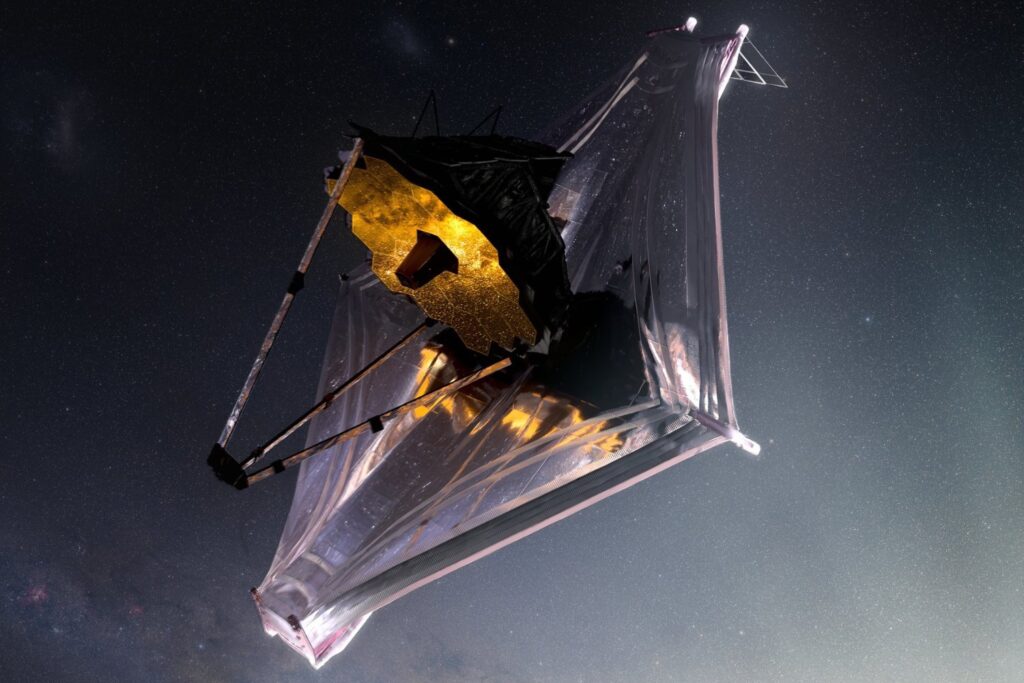The Webb Space Telescope mission is threatened—not by anything in the desolate outskirts of the Sun, but by potential budget cuts.
Webb is performing better than expected, astronomers say, but reduced funding for the telescope’s operation could jeopardize the rate and quality of the mission’s outputs. The funding shortfall could reduce the mission’s effectiveness as early as fall 2025, according to SpaceNews.
NASA’s latest request for the telescope’s future budget would cut the mission’s operational budget by 20%, according to Tom Brown, head of the Webb Telescope mission office at the Space Telescope Science Institute.
The Webb Space Telescope began scientific operations in July 2021. Webb images the cosmos at infrared and near-infrared wavelengths, which distinguishes it from the 35-year-old Hubble Space Telescope, which takes images from ultraviolet to near-infrared wavelengths. Webb can image the most ancient light we can detect, allowing the telescope see individual stars and galaxies from the early universe.
Webb can only observe one thing at a time, and there’s only so much observing time available on the telescope. Brown told Gizmodo that time on the telescope is oversubscribed by a ratio of 9:1—meaning nearly 10 times as many scientists want time on the telescope than are afforded it.
According to a presentation by Brown shared at a town hall earlier this month, Webb’s operational costs were set “idealistically low in 2011.” Combined with higher-than-expected inflation and less flexibility in NASA’s budget, Webb faces a budget shortfall even with flat top-level funding.
“If the budget reductions went into effect, the impact would cut across all aspects of operations,” Brown told Gizmodo in an email. Everything from solicitation and peer review of programs, to planning and scheduling of observations, to data calibration and analysis, public outreach, and more would be affected by the proposed reductions to Webb’s budget.
“These cuts would decrease the observatory efficiency and slow response to anomalies, thus reducing the amount of observing time available,” Brown added. “The cuts would decrease the cadence and fidelity of instrument calibration, reduce support for the observing modes associated with the four scientific instruments, and even reduce the number of instrument modes available for science, thus decreasing the scientific productivity and impact of the mission.”
Webb had a surprisingly perfect launch into space in December 2020, meaning that less fuel was used getting the telescope into space than expected. The saved fuel meant that the mission’s lifetime will be longer than scientists projected—perhaps up to 20 years, up from a minimum mission baseline of five years.
But the telescope won’t last forever, so it’s imperative that scientists optimize their time with Webb. In the last solicitation for proposals alone, the Space Telescope Science Institute Webb mission team received 2,377 proposals for time with the telescope. Demand for the telescope’s time is a measure of its importance to science, one that does not grok with the shrunken budget proposal. It’s critical that NASA finds a workable solution, or their marquee mission of the decade will be underperforming just two years into its (potentially) two-decade runtime.







